Exploring DNA Like a Game of "Genetic Musical Chairs"
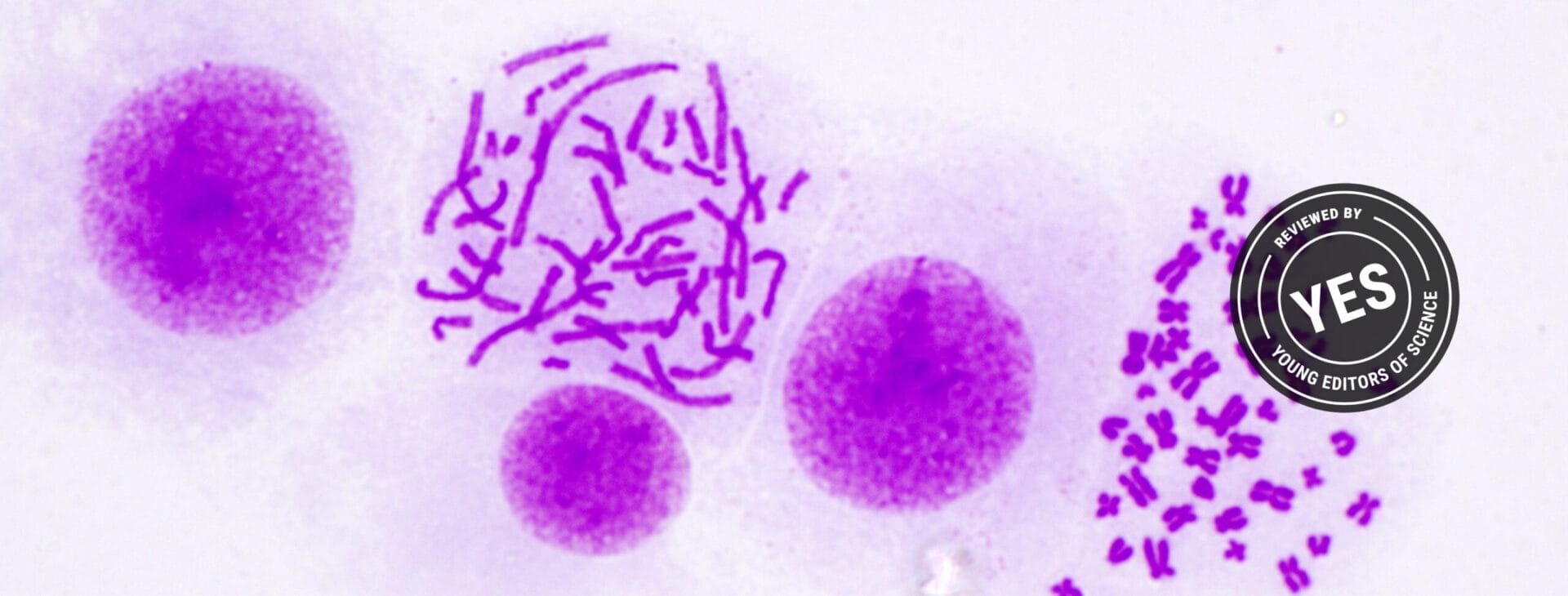
This article explores a process called chromoplexy, which involves the mixing up of DNA inside our cells and can affect how our body works.
This article has been written as part of the Young Editors of Science (YES) project. The project turns complex scientific papers into clear, engaging articles for young readers aged 10 and up. Using AI tools like ChatGPT and feedback from young reviewers, we make cutting-edge research accessible and fun to explore.
This YES article is based on the work of Nathaniel Anderson and colleagues at the Wellcome Sanger Institute (2018).
Key terms
Chromosome
A long molecule which stores all or part of the DNA of an organism.
Gene
A section of DNA within a genome that carries a specific set of information - often the information needed to make a protein.
Chromoplexy
A process where chromosomes can get mixed up or rearranged, which can affect how the cell works.
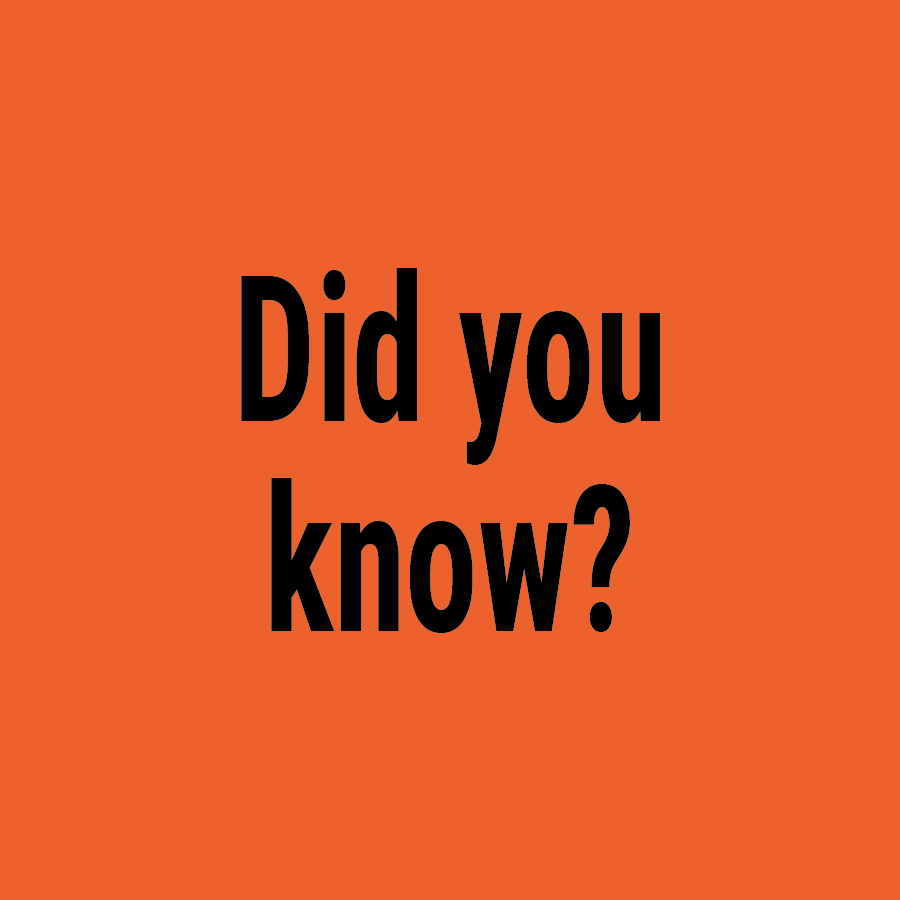
The human body has around 37 Trillion Cells (37,000,000,000,000) – that's a lot of DNA!
A cell is the smallest unit of life, like a tiny factory that keeps your body working. Now imagine that inside each cell is a giant LEGO® instruction book made of DNA. This “book” (known as our genome) is divided into chapters called chromosomes, and each chapter contains pages called genes. Each gene is like a specific LEGO® instruction page, telling the cell how to build different parts of the body. These instructions help make proteins, which are like the special LEGO® pieces needed to keep everything working properly. Just like following the right steps in a LEGO® guide ensures you build an amazing creation, your cells follow DNA instructions to keep your body running smoothly!
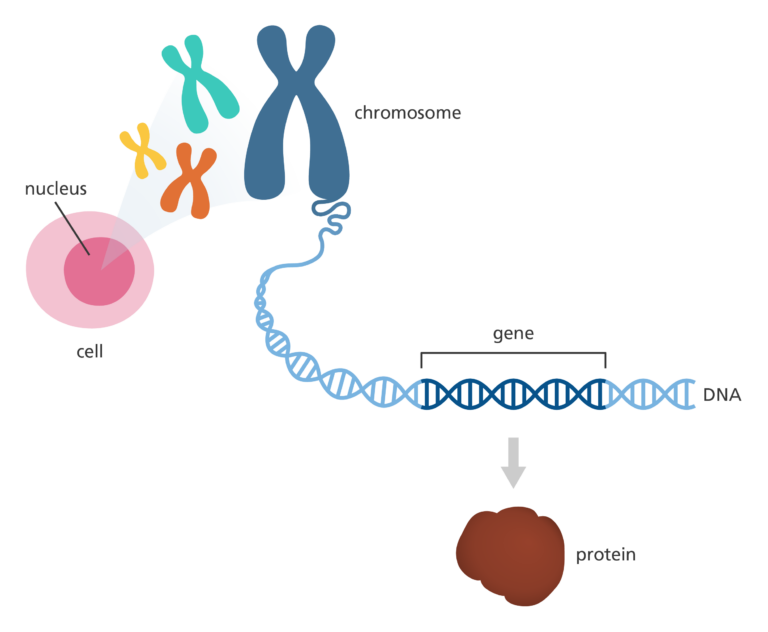
Sometimes, the chromosomes in our cells can go through changes. Imagine the pages of the LEGO® instruction book get shuffled around, with some pages ending up in different sections. Scientists call this process "chromoplexy," and it’s like a creative funky mix that can sometimes lead to surprising new formations in our DNA. Let’s find out how it works below.
The game of chromoplexy
You can look at chromoplexy as being a bit like a game of musical chairs. Several DNA pieces, instead of swapping one-to-one (as in a simple trade), get shuffled in loops, forming new connections. Think of it like players standing up and finding new seats during a round of musical chairs, but nobody is left out! This reshuffling might bring together genes that weren’t meant to work side by side. Scientists are particularly interested in these new formations because they can unlock mysteries about how our bodies change and evolve.
Chromoplexy doesn’t always happen little by little – it often occurs in big bursts. Imagine a round of musical chairs where everyone finds new seats at once, rather than a slower one where only two players swap chairs. These big bursts mean that many DNA changes happen at the same time, creating a big change in the cell.
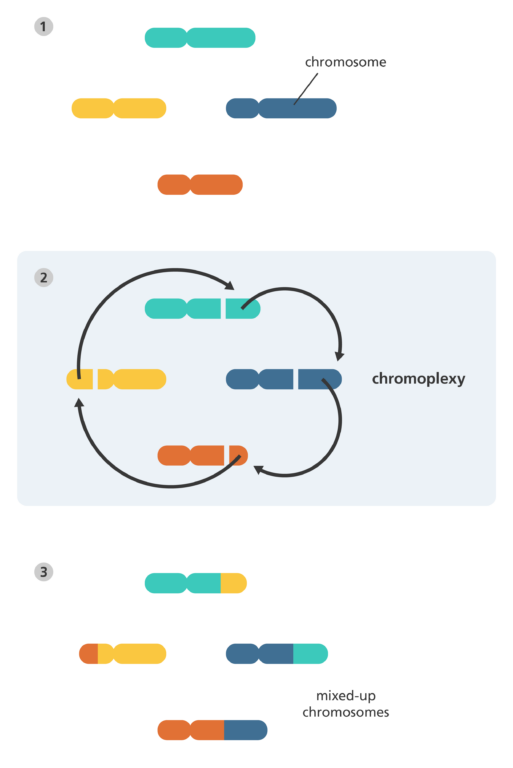
What happens when DNA plays musical chairs?
When DNA gets mixed up through chromoplexy, it can create new “fusions.” This means two genes that weren’t originally connected are now joined together. These gene fusions sometimes result in cells behaving differently. For example:
- They might grow faster, or in unusual ways.
- They could create entirely new proteins that weren't part of the original building blocks "instruction set" of the cell.
- They may not work at all.
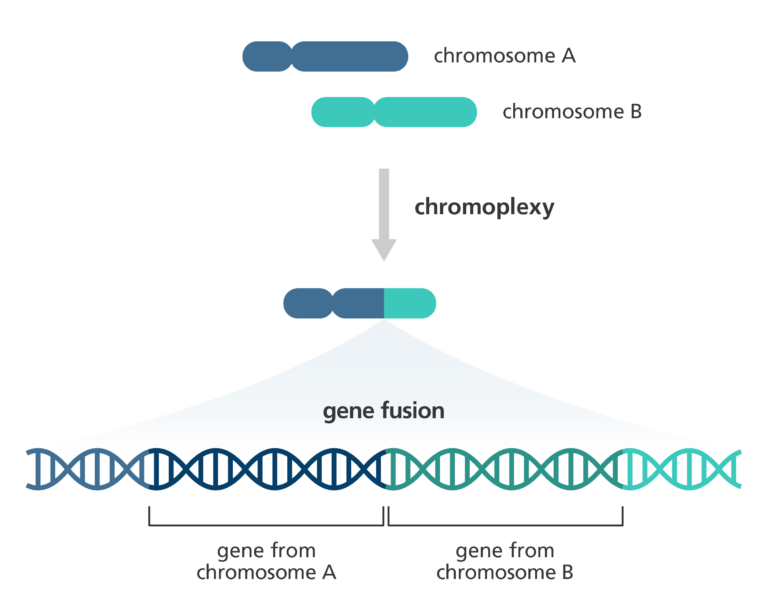
Why do chromosomes rearrange?
But why does chromoplexy happen in the first place? Well, Scientists think this happens because of mistakes made when cells copy gene instructions. The idea is that DNA strands come together in busy areas inside the cell’s nucleus where many genes are being copied at the same time. Since the DNA is unwound in this process, it can get twisted or tangled – like a long string, or mobile phone cable getting knotted. This stress can cause the DNA to break and then it gets mixed up when it is repaired.
Another way to think about it is this. Imagine that our cells are busy kitchens, always making proteins to help the body run smoothly. Sometimes, when DNA is copied, small “cooking accidents” happen. For example, the DNA might break and rejoin in unusual patterns. This can be influenced by how often a part of the DNA is being used, which is like a recipe page in a cookbook getting smudged or torn from being used all the time.

Humans have 23 pairs of chromosomes, but the Atlas blue butterfly (Polyommatus atlantica) has 229! The largest number of chromosomes in any animal species.
Scientists noticed that chromoplexy happens in parts of DNA that are highly active – like favourite recipes that you make all the time. These are early replicating DNA sections, which means they are copied first when a cell divides.
Why does this matter for our health?
Chromoplexy helps scientists understand how our bodies grow and change over time. It plays a really important role in how certain cells behave, and how new patterns in our DNA can affect our health. For example, understanding chromoplexy gives researchers clues about why some cells may not work as we expect, and how we might fix them. Doctors could use their knowledge to develop new tools for spotting changes in cells early, and to find better ways to keep us healthy as we get older. This discovery also helps scientists understand how our DNA changes naturally over time, and how to help keep our DNA in good shape.
Quiz time!
Answer: A) DeoxyriboNucleic Acid
DNA is like a recipe book inside your body — it tells your cells how to grow, work, and stay healthy! The full name sounds tricky, but it just describes the special molecules that carry your body’s instructions.
1. What does DNA stand for? A) DeoxyriboNucleic Acid B) Dextrous Neurological Attitude C) Donkeys Need Attention
Answer: B) A bundle of tightly packed DNA that tells cells how to grow and function
Imagine DNA as a super long string. A chromosome is like a neat spool that keeps that string organized so your cells can read it properly. Humans have 46 of these spools in most of their cells!
2. What is a chromosome? A) A type of cell found in the body B) A bundle of tightly packed DNA that tells cells how to grow and function C) A type of protein
Answer: B) A process where chromosomes can get mixed up or rearranged, which can affect how the cell works.
Chromoplexy is like playing musical chairs with bits of DNA — they end up in different spots, which can sometimes cause cells to behave in unexpected ways. Scientists are still learning how this affects diseases like cancer.
3. What is chromoplexy? A) A process where DNA copies itself inside the cell B) A process where chromosomes can get mixed up or rearranged, which can affect how the cell works C) A wrestling move involving a metal chair
Answer: A) Gene fusions
Gene fusions happen when pieces of different genes stick together. It’s like mixing two different songs — sometimes the new mash-up sounds great, and other times it just doesn't work!
4. When DNA gets mixed up in chromoplexy, what does it create? A) Gene fusions B) Gene flavours C) Gene fixtures
Answer: C) Atlas blue butterfly
Surprise! It’s not humans or whales — it’s the Atlas blue butterfly, with a whopping 448 chromosomes! Humans only have 46. That little butterfly packs a huge amount of information in its tiny wings!
5. Which animal has the most chromosomes? A) Humans B) Blue whale C) Atlas blue butterfly

Special thanks to the students of Duxford Primary School, acting as our young reviewers, to make this research accessible.